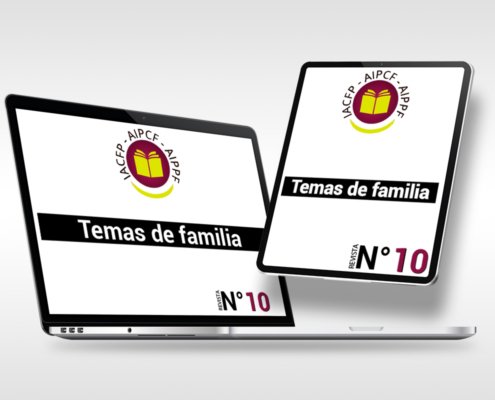REVISTA N° 10 | AÑO 2011 / 2
EDITORIAL
DAVID BENHAÍM, EZEQUIEL A. JAROSLAVSKY
The title of Issue 10 is Family Themes, which clusters a number of articles that focus on various themes relating to the family.
In the article, The silent transformation of the family. Lucarelli & Tavazza adopt Freud’s sensitivity to the cultural context: its transformations and effects on psychic life. With this premise, they explore transformations that drastically affect families at the turn of the twenty-first century; which leads them to discuss new families in comparison to the old. For their study of this subject, the authors take from the frame of the philosopher François Jullien the concept of “silent transformation” to identify the idea of something indeterminate and fluid, always moving, in which what is has already changed before your eyes. It is similar to the vision of Heraclites. From British sociologist Zygmunt Bauman they also borrow the concept of liquidity to characterize the context of uncertainty in which we live. Links today are liquid: fragile, inherently transitory and perishable. It is in this frame that they inscribe their considerations on the de-stabilization that affects the family, the couple, links and love relationships.
In Dépendance et ses dérivés selon le vertex de l’intersubjectivité [Dependency and its derivates in relation to the vertex of intersubjectivity], Alberto Eiguer discusses the theory of intersubjective links as the most fertile perspective for advances in the study of dependency. This author’s originality consists in decentering the vantage point from which analysts question the problem of dependency: leaving aside the inquiry centered on individuals and their mechanisms, he centers his inquiry on the family context in which the individual develops. This is where the theory of intersubjectivity comes into play. This focus leads him to ask some questions which he debates and then uses to develop the theme of dependency.
In The secret as an obstacle, Irma Morosini asks what processes of family psychoanalytic therapy become when a member of the family announces to the therapist that there is a secret that this member has decided not to reveal to the other members of the family, making it a condition of acceptance of engagement in analytic work and simultaneously locking the therapist into this secret. The author asks what happens to analytic work in these conditions and what the therapist’s countertransference becomes in view of this imposition and the violence of this silence. These questions are illustrated with a clinical case.
In Paradoxes groupalistes [Groupalist paradoxes], Jacques Robion takes a polemical position on the question of groups and those who declare themselves “groupalists”, denouncing both what he calls the “groupalist” paradox and illusion, a paradox and an illusion in which, while they declare that they are “groupalists”, they exclude those who do not work upon certain concepts such as, for example, organizing unconscious fantasies or imagos.
In her article, Tiempos y filiaciones a la adolescencia en terapia familiar psicoanalítica [Time and filiations to adolescence in psychoanalytic family therapy], Rosa Jaitin makes the concept of temporality the red thread of her reflections. The separation of adolescents from their families opens the dimension of the future as the privileged dimension of re-foundation. She focuses her inquiry, as she describes it, “on the rhythm of interchanges between the different members of the family at the inter- and trans-generational level in the different dimensions of filiation: the couple link, the filial link and the fraternal link.” She considers the concepts of interchange, rhythm of interchange and articulation of the rhythms of interchange between the different members of the family essential for understanding defects in links of filiation. A clinical case illustrates the re-activation of wounds of filiation in families of adolescents as an attempt to work through suffering.
Finally, in the section dedicated to the analysis and commentary of books, the Critique épistémologique ou procès contre Freud [Epistemological critique or prosecution of Freud] by David Benhaim analyzes and amply comments on the book by Guy Laval, Un Crépuscule pour Onfray [A Twilight for Onfray], which is a response to Onfray’s book, Le Crépuscule d’une Idole [The Twilight of an Idol]. He shows how Laval’s vigourous and honest essay de-constructs the text by Onfray, a labour of criticism that follows this text with annotations.
To conclude, we wish to express our gratitude to Dr. Anna Nicoló, the outgoing editor of the AIPPF Journal. The Journal was founded under her direction and has grown and developed richly up to now. She has fortunately expressed her wish to continue to participate and collaborate with us as a member of the Editorial Committee. We wish to express our sincere gratefulness for her work as Editor, as well as our disposition to follow the guidelines she established.
David Benhaïm
Ezequiel A. Jaroslavsky
Co-Editors
AIPPF Journal

